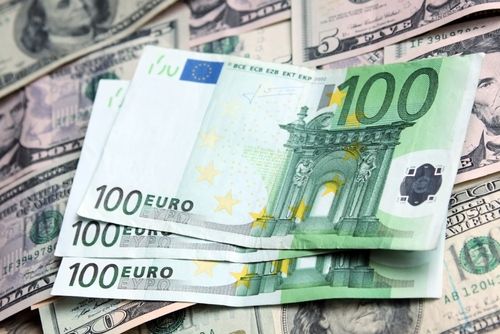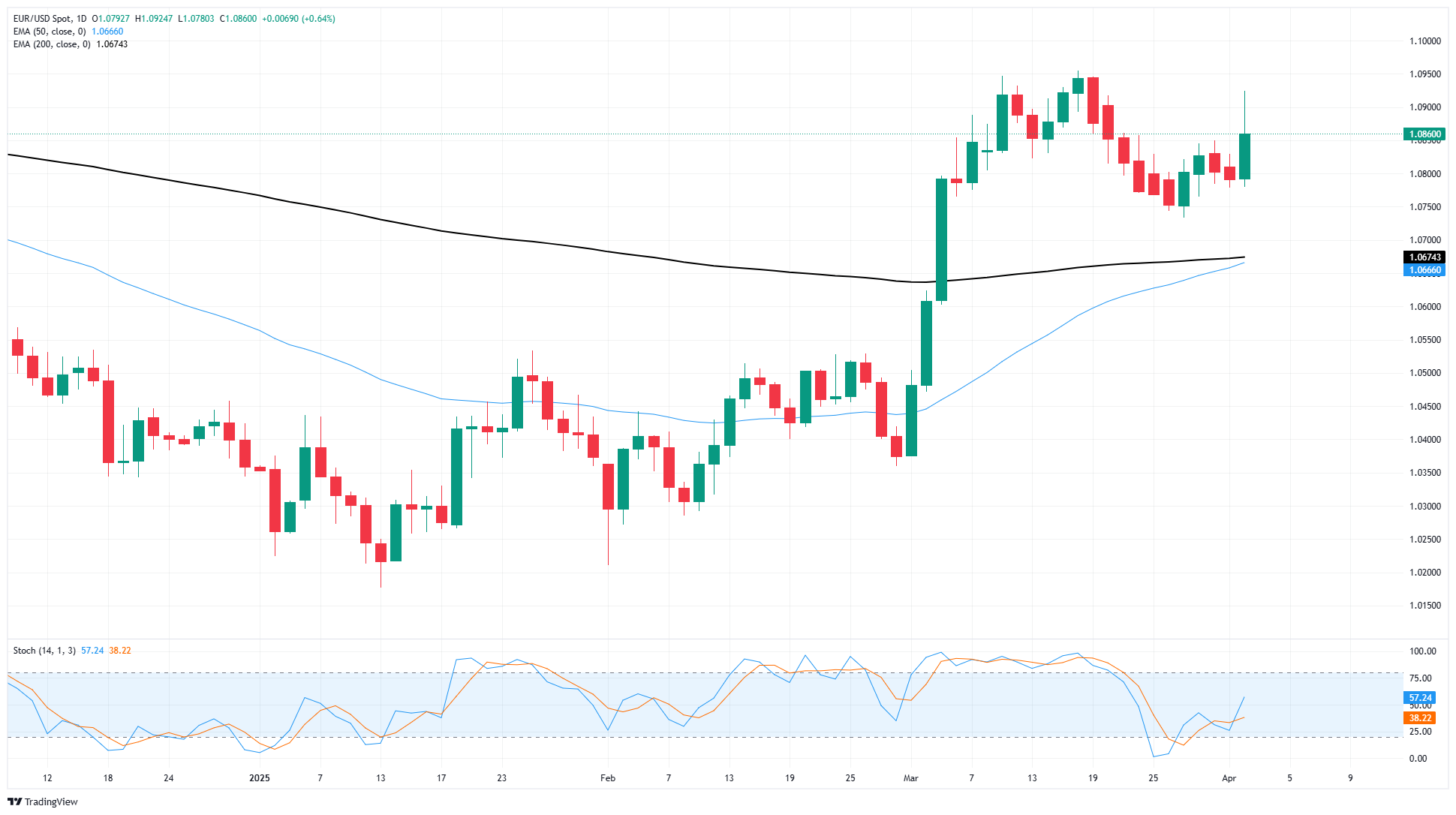
EUR/USD briefly tapped the 1.0900 level on Tuesday before falling back to familiar levels.
Markets broadly handled tariff announcements from the Trump administration with little noise on Wednesday.
Economic data takes a back seat to Trump tariff stress, but NFP still looms ahead.
On Wednesday, the EUR/USD pair saw a bullish surge after the Trump administration announced tariffs that turned out to be less severe than many investors had anticipated, given President Donald Trump’s barrage of tariff threats over the last 72 days. While the specifics of these tariff proposals are intricate, US consumers should prepare for a uniform 10% tariff on all imports, a hefty 25% tariff on all cars and car parts, and varying' reciprocal” tariffs imposed at different rates depending on the country.
Additionally, Trump reiterated his commitment to introduce further tariffs on items like copper, microchips, and other essential imported consumer products that are vital to the US economy. As these tariffs are likely to increase consumer prices in the upcoming months and there is no obvious alternative for the market to source foreign goods without incurring heavy import taxes, inflationary pressures are expected to rise soon and persist for a longer duration than desired. According to Federal Reserve (Fed) officials, the ambiguity surrounding the Trump administration’s trade policies is likely to maintain elevated interest rates for an extended period, surpassing previous expectations.
Read more: Trump announces reciprocal tariffs
European economic indicators will likely remain moderately unimportant for the rest of the trading week. Meanwhile, new US Nonfarm Payrolls (NFP) labor figures are expected this Friday. This NFP report could significantly influence the markets as the US economy transitions into a post-tariff phase, with the March labor statistics serving as a key indicator of the effects of the Trump administration’s tariff strategies.
EUR/USD price forecast
EUR/USD continues to trade in the middle of a technical trap, with buyers unable to take a firm leg higher, but short pressure too limited to push Fiber price action back under the 200-day Exponential Moving Average (EMA) just south of the 1.0700 handle.
EUR/USD snapped a near-term losing streak, pushing technical oscillators into oversold territory, but a continuation pattern remains unlikely as market participants focus on geopolitical factors.
EUR/USD daily chart
* The content presented above, whether from a third party or not, is considered as general advice only. This article should not be construed as containing investment advice, investment recommendations, an offer of or solicitation for any transactions in financial instruments.



